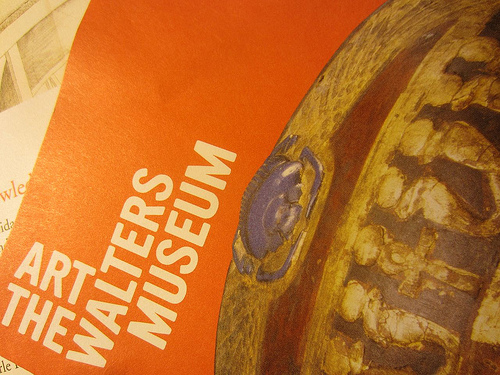
This month, I started working for the man, umm, woman. I took a job as the administrative manager for Doreen Bolger, the Director of the Baltimore Museum of Art. It has been eleven and a half years since I have worked for someone else. The change is drastic. Art museums are those stodgy institutions we mean to visit but never do, right? Not like the vibrant and insurgent work I was involved in at the Baltimore Love Project.
But perhaps what I’m doing isn’t so different after all. Here’s why…
The Product: Experience driven by meaningful context
Art was certainly discussed my first week at the museum. There were the obvious considerations, such as what we should do about restrictions placed on the collection by a generous patron … and what do we do with this work that was “given” to us? … and how do we inform the staff that some decisions administrative decisions may challenge installation set-ups? But more than anything, the conversation revolved around making the best possible experience for our guests. Context is crucial for making the work matter to them. Something as seemingly insignificant as the flooring in a gallery can radically alter the viewer’s experience, just as the location of a mural can radically alter space and our relationship to it.
The Decision Influencers: The Curators
The “artists” at a museum are the curators. The museum is going through prolific renovations that will significantly enhance the visitor experience. The renovation also drastically changes the curators’ opportunities, or forces them to give new thought to their work. A concern experienced frequently in my first week were the compromises required of our curators as a result of the changes. Rather than “resolving” the situations with the architect, the contractor, and the director, the curators were included in the decision making process. The curators voices are heard. Needless to say, impossible constraints and limited budget frequently won, but the curator was part of the decision, despite how much easier, and potentially less costly, it would have been to make the decision in their absence. The creativity of an artist, whether on the street or in the museum, needs to be represented at the decision making table.
The Perks: An hour with a world class scholar on Matisse.
The highlight of my week was a guided tour of the current exhibition on Matisse, Matisse’s Marguerite: Model Daughter. For one hour prior to opening to the public, the staff was invited to the Cone Wing for a guided tour by Jay Fisher. This astonishing installation features works by Matisse with his own daughter Marguerite as his model. The finer points conveyed to me by one of the world’s leading authorities on the artist’s life and work on enhanced my own experience at the museum.
It’s exactly the awe and appreciation I felt for these priceless wonders that I want to instill in others. Art museums are not places that art works go to die; they should be a place where art becomes meaningful to every aspect of our lives.


